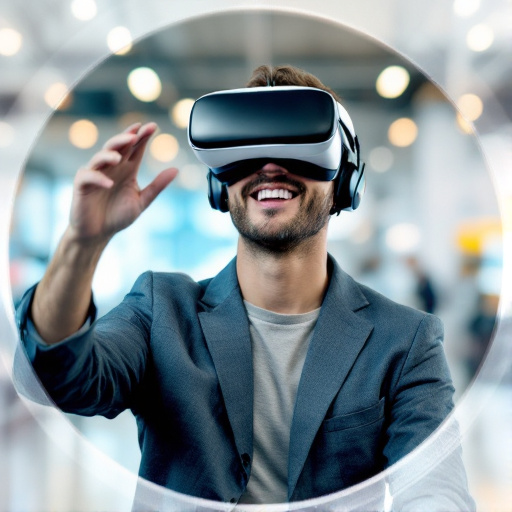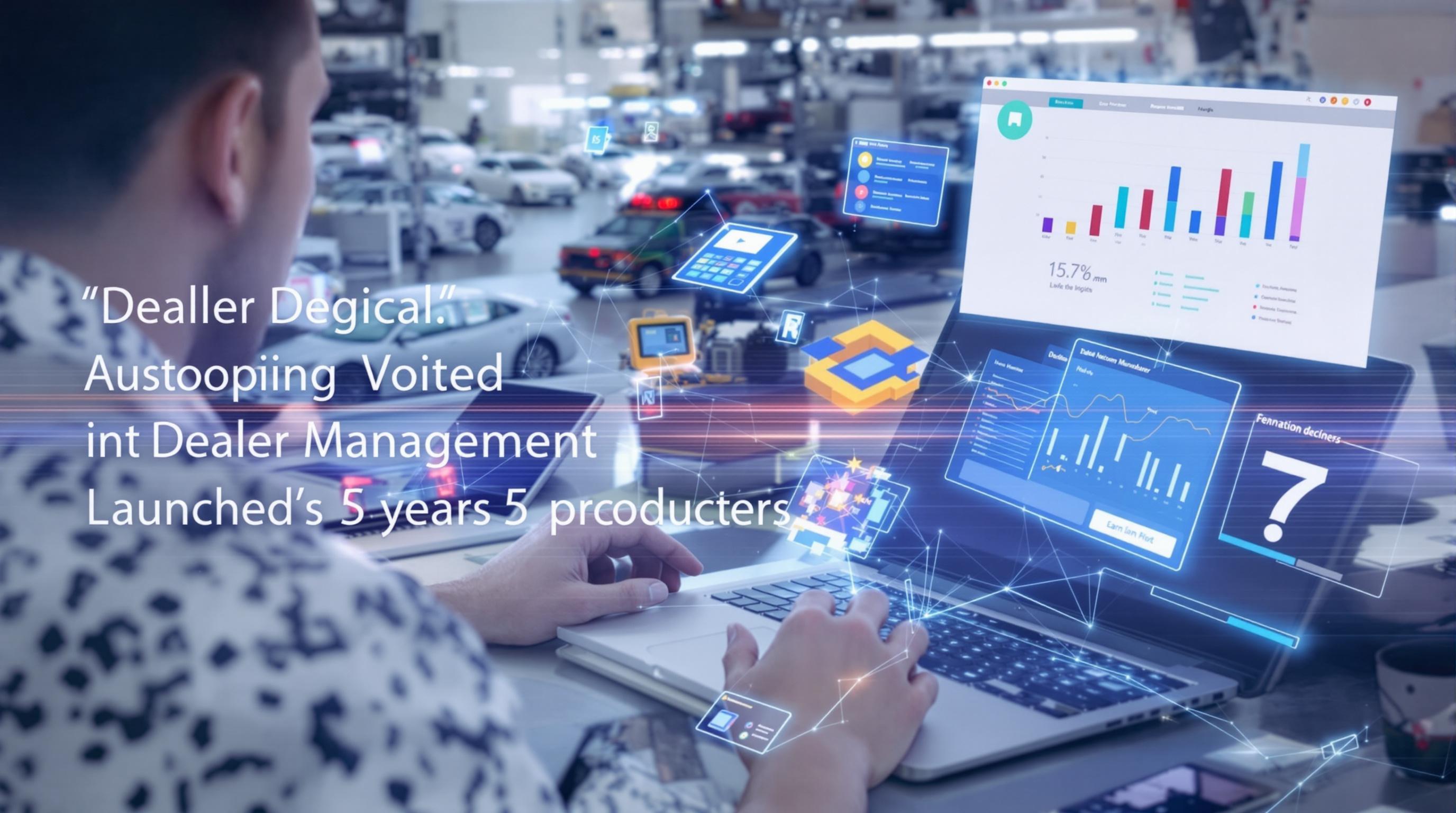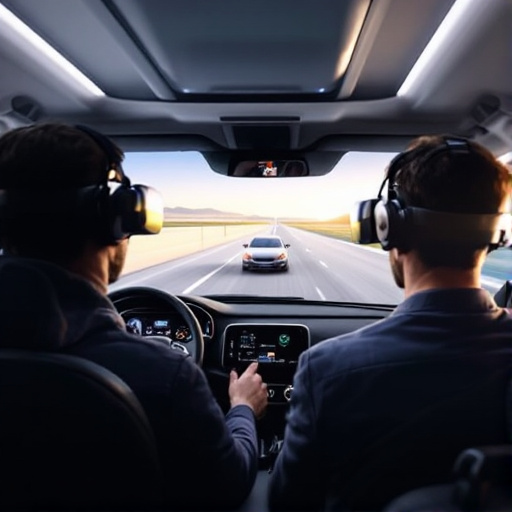Related Articles
- Unveiling the Unthinkable: How Your Social Media Posts Could Impact Your Car Insurance Premiums
- "From Showroom to Social Media: How Dealerships are Becoming Digital Storytellers in 2023"
- "From Showroom to Stream: The Rise of Virtual Reality Test Drives at Dealerships"
- Revving Up Sales: How Virtual Reality is Transforming the Dealership Experience for Shoppers and Sellers Alike
- Selling Experiences: How Dealerships Can Transform into Immersive Automotive Entertainment Hubs
- The Surprising Impact of Your Credit Card Habits on Car Financing: What You Didn't Know!
Revving Up Sales: How Virtual Reality is Transforming the Dealership Experience for Shoppers and Sellers Alike
Revving Up Sales: How Virtual Reality is Transforming the Dealership Experience for Shoppers and Sellers Alike
In today's fast-evolving automotive market, virtual reality (VR) is revolutionizing the dealership experience, making it as immersive as possible for buyers while enhancing efficiency for sellers. From virtual showrooms to interactive test drives, the technology is reshaping how we buy and sell vehicles in ways that are both innovative and efficient.
The Virtual Revolution in Auto Dealerships
Just picture this: it’s Saturday afternoon, the sun is shining, and instead of trudging from dealership to dealership, you slip on a VR headset from the comfort of your home. You are immediately transported into a spacious, virtual showroom filled with shiny new models. This scenario is no longer fiction; it is reality for many dealerships today.
A Case Study: ABC Motors Leads the Way
ABC Motors, a mid-sized auto dealership in suburban Chicago, took a leap of faith by investing in VR technology last year. The results? A staggering 45% increase in customer engagement! By utilizing VR, they allowed customers to experience vehicles in ways traditional dealerships could not.
The Benefits for Buyers
For shoppers, the advantages of VR are numerous. Imagine being able to browse through a vast selection of vehicles, examining the exteriors and interiors in 360 degrees, all without leaving your living room. According to a recent study by the National Automobile Dealers Association (NADA), 67% of car buyers expressed a desire for a more interactive buying experience, demonstrating an obvious demand for such innovation in the market.
Engaging User Experience
In a world where instant gratification is the norm, VR environments can provide thrilling user experiences. Shoppers can sit inside the car, feel the leather seats, and interact with the dashboard, all while getting an authentic feel for the vehicle. Out of all experience, 78% of users felt that VR increased their interest in a vehicle, proving that touch and feel play a crucial role in the automotive market. This starkly contrasts with flat images and holograms that fail to capture the essence of the car.
The Seller's Perspective
But it’s not just buyers who benefit; sellers are also revving up sales thanks to VR. Traditionally, sales staff spend hours showing models, answering inquiries, and providing test drives. But with the advent of virtual showrooms, a salesperson can guide multiple customers through different vehicles simultaneously, optimizing their time and efforts.
A Win-Win Scenario for All
This brings us to an important metric: dealer productivity has increased by nearly 30% in some cases where VR was implemented. Both virtual tours and the reduction in physical paperwork streamline operations, resulting in smoother transactions and enhanced customer satisfaction.
It's Not Just for Car Enthusiasts
Now, let’s address the elephant in the room: aren’t car-focused technologies geared primarily towards gearheads? Not necessarily. Research shows that 52% of first-time car buyers are millennials or Gen Z, many of whom are more comfortable with digital interactions than in-person experiences. VR fits right into their shopping habits, catering to a demographic that could take advantage of this immersive technology.
Breaking Down Costs and Barriers
Of course, technology doesn’t come without its challenges. The initial investment to set up a VR system can be steep—ranging from $50,000 to upwards of $200,000 depending on the sophistication of the system. However, the ROI can quickly outpace costs when you consider the increased traffic and sales generated. In fact, dealerships that have adopted VR have seen average deal sizes rise by 15%, according to a report by Deloitte.
The Learning Curve
Alongside economic considerations, training staff to use this technology effectively poses another hurdle. It’s essential for personnel to not only become adept at handling VR systems but also to master the interactions with customers that lead to successful sales. This isn't just a technical upgrade; it's a shift in culture within the dealership.
Overcoming Challenges with Innovative Solutions
Despite the obstacles, dealers are finding innovative solutions. Many are turning to partnerships with tech companies for assistance, creating bespoke systems that cater directly to their needs. Additionally, ongoing training and support ensure sales staff are not left helpless when transitioning to a new system.
The Future is Now
Whether we like it or not, the future is upon us. Virtual reality isn’t just a passing trend; it’s a vital component of the modern car-buying experience that is here to stay. According to PwC, 39% of consumers globally expressed interest in using VR when purchasing products—an indicator of how important immersive technology is becoming for various sectors.
Example from the Luxury Market
Let’s take a moment to consider high-end luxury brands. They are often the first to embrace cutting-edge technologies, and the automotive sector is no different. Brands like Audi and Bentley are already using VR to create exclusive “virtual test drive” events for their clientele, enhancing luxury experiences while also ensuring safety and convenience during pandemic-induced restrictions. It’s a perfect blend of exclusivity and innovation.
Casual Day at the VR Showroom
Imagine a relaxed Saturday morning—what are you doing? Well, it's not just another day of basic errands; it's your VR car shopping day! You grab your favorite coffee, slide into your cozy chair, and with a simple swipe, you’re wheeled into a stunning digital realm where cars zoom by and the enticing scent of leather fills the air. No crowded showrooms, no pressure from salespeople—just you and the thrilling world of automotive possibilities.
Building Brand Loyalty Through Experience
For dealerships, virtual reality offers a unique channel to build brand loyalty. By providing immersive, interactive experiences, dealerships can foster a deeper connection with customers that transcends traditional transactional relationships. When customers feel a personal connection to a brand, they are more likely to remain loyal and return for future purchases.
The Role of Social Media
With the rise of social media, VR experiences can be easily shared by customers. A happy buyer may post their experience online, giving the dealership free promotional material and an enhanced reputation. Studies show that 95% of consumers share their good experiences on social platforms, exponentially expanding a dealership’s reach.
Introducing Personalization
Personalization is king in today’s retail market, and VR offers unique avenues to leverage this. With VR, retailers can customize experiences, suggesting specific car models and showcases based on previous interactions and preferences. This—along with the ability to save favorite models and create personal wish lists—can increase user satisfaction and lead to higher purchasing intent.
The Data-Driven Future
As dealerships integrate customer data into their VR experiences, the opportunity for customization becomes even more refined. Using algorithms and machine learning, virtual technology can analyze buyer preferences and offer tailored experiences that enhance communication and streamline the sales process.
Riding Into the Horizon
In conclusion, the impacts of virtual reality on the dealership experience mark just the beginning of a thrilling journey towards a more interactive, personal, and efficient future for car buying. For dealerships, embracing this technology isn’t an option; it has become a necessity to stay relevant in a digitally-driven market. The marriage between innovation and the automotive landscape is not just inevitable; it's here, revving up and ready to hit the road.
As a 28-year-old enthusiast with a passion for storytelling and technology, I can confidently say that the thrill of the open road is now sweeter than ever. Embracing virtual technology in dealerships signifies a golden era for both buyers and sellers alike, unlocking better sales, happier customers, and experiences that are simply unforgettable.




